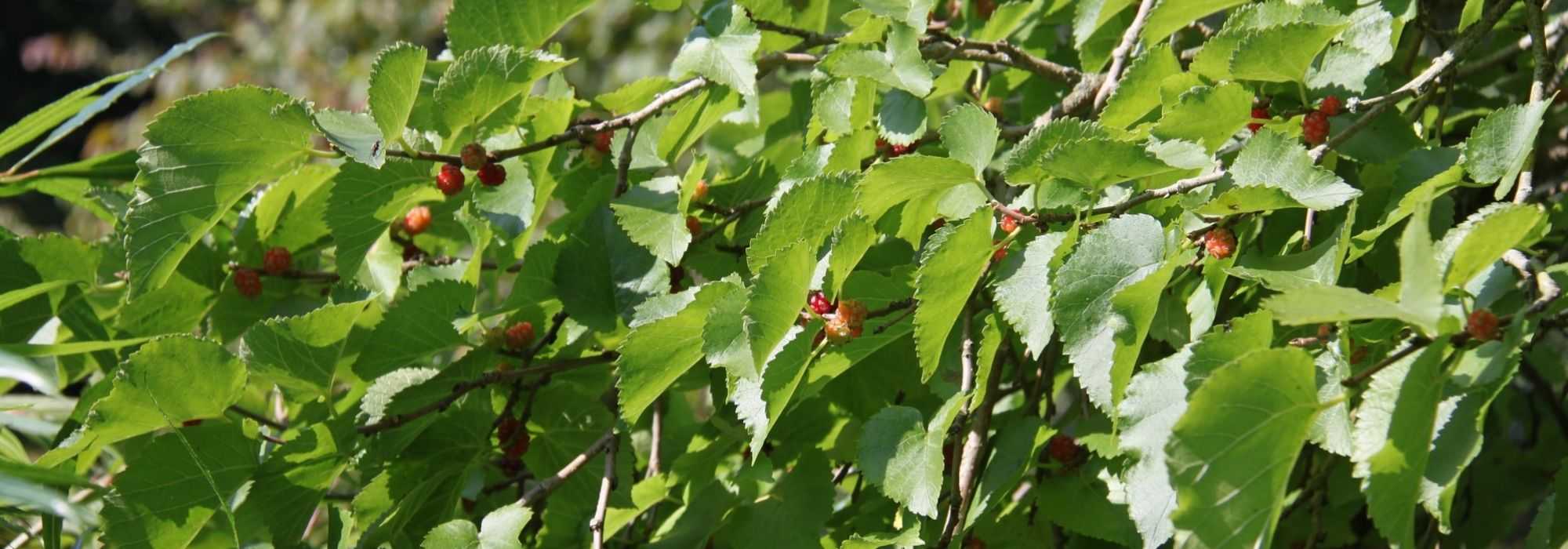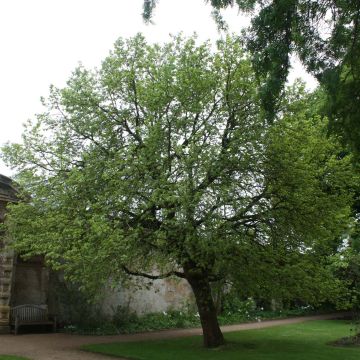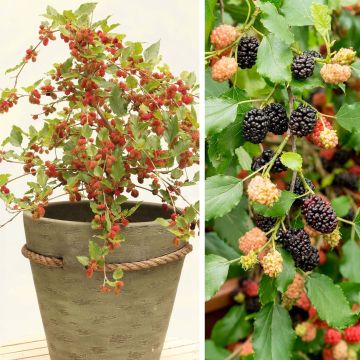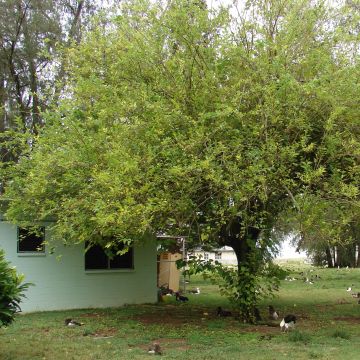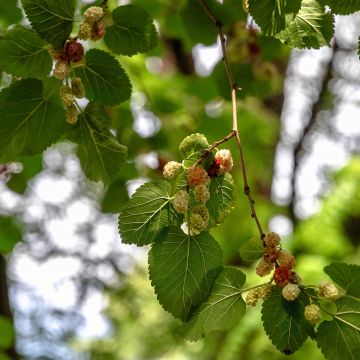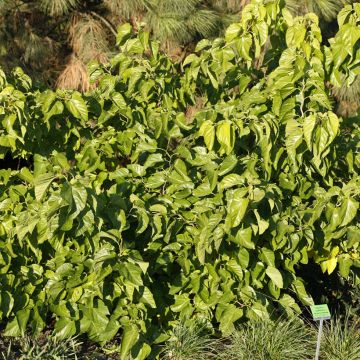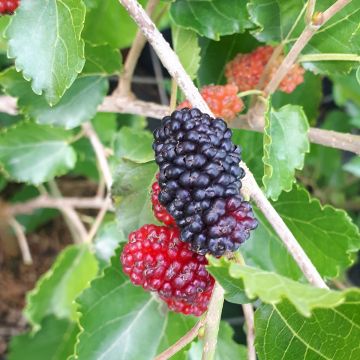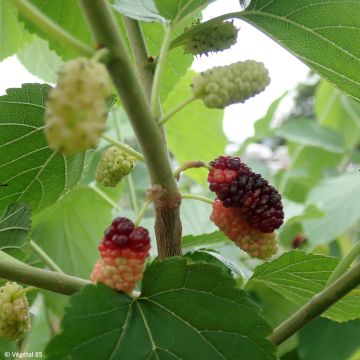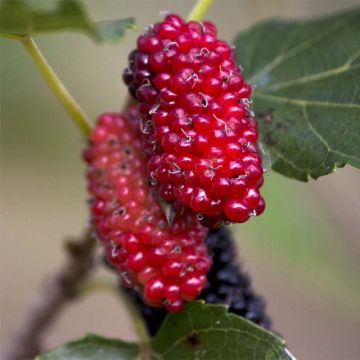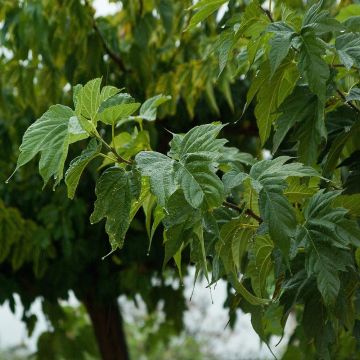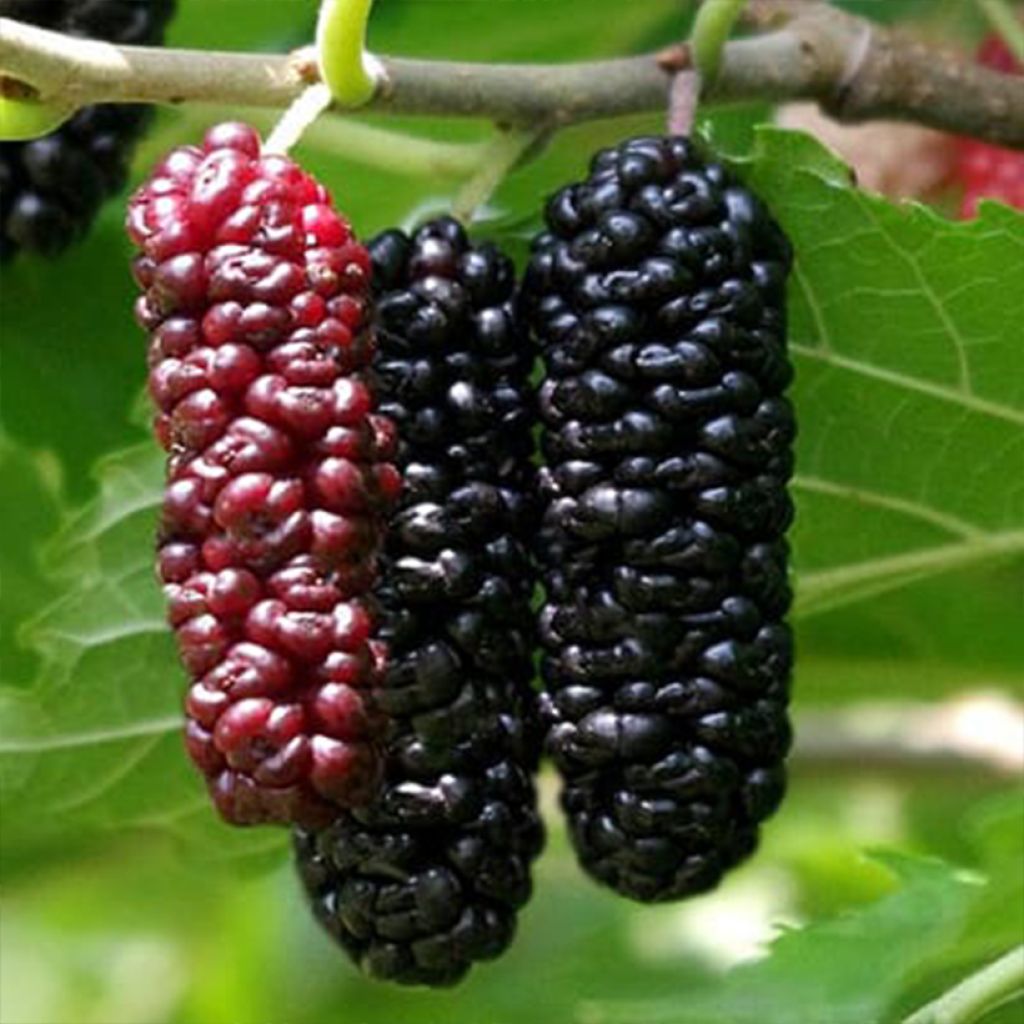

Morus rubra Illinois Everbearing
Morus rubra Illinois Everbearing
Morus rubra x alba Illinois Everbearing
Special offer!
Receive a €20 voucher for any order over €90 (excluding delivery costs, credit notes, and plastic-free options)!
1- Add your favorite plants to your cart.
2- Once you have reached €90, confirm your order (you can even choose the delivery date!).
3- As soon as your order is shipped, you will receive an email containing your voucher code, valid for 3 months (90 days).
Your voucher is unique and can only be used once, for any order with a minimum value of €20, excluding delivery costs.
Can be combined with other current offers, non-divisible and non-refundable.
Home or relay delivery (depending on size and destination)
Schedule delivery date,
and select date in basket
This plant carries a 6 months recovery warranty
More information
We guarantee the quality of our plants for a full growing cycle, and will replace at our expense any plant that fails to recover under normal climatic and planting conditions.
Description
The 'Illinois Everbearing' hybrid mulberry tree, resulting from a cross between Morus rubra and M. alba, is a fruit tree selected for its productivity, the delicious taste of its large black fruits, and its particularly long harvesting period. This ornamental and fruit-bearing tree is extremely resistant to cold, drought, and diseases. Its fragrant, sweet fruits are delicious fresh or in jams. This variety quickly bears fruit, with the first fruits being harvested after 3 years of cultivation.
Morus rubra 'Illinois Everbearing' belongs to the Moraceae family like all mulberries. This variety is the result of a cross between two botanical species, Morus rubra and Morus alba, carried out in the United States. This deciduous tree reaches between 4.5 and 6 metres in height at maturity, with a width of 4 to 5 metres. Eventually, after many years, its height can reach 10 metres if conditions are optimal and it is never pruned. It has a fast growth rate. This variety has a late bud burst period and flowering for a mulberry tree, which protects it from late spring frosts. Even if the plant freezes, it does not prevent fruiting, it simply delays vegetation, flowering, and fruiting. This hybrid mulberry tree has tender green deciduous foliage, with a leathery texture, which turns yellow in autumn before falling. Its very nectar-rich, white to greenish flowers appear throughout May, in June, and sometimes even in July. They gradually form on the young shoots of the year. The large, cylindrical fruits change from red to almost black when ripe. The earliest ones start to ripen at the end of June and the last ones will be ripe in early autumn: the harvest is spread over more than 3 months. Flowering occurs on the current year's growth, severe pruning at the end of winter allows you to control the height of the tree without compromising fruiting. Its longevity and attractive habit give this 'Illinois Everbearing' hybrid mulberry tree a picturesque character as it ages.
The 'Illinois Everbearing' Mulberry is a self-fertile tree and does not require the presence of another variety to bear fruit. Its fruits contain juicy, very sweet and subtly fragrant pulp. Carried by short peduncles, they resemble blackberries (Rubus fruticosus), but they are much larger and seedless. Caution, these mulberries can have a laxative effect and their pigment can cause stubborn stains. Rich in antioxidants, vitamins B and C, and minerals (iron, calcium, and magnesium), they provide about 50 kcal/100g. Birds are fond of these mulberries.
In the kitchen: The fruits should be carefully harvested when they have reached a black colour at full ripeness, otherwise, they will be too acidic. Eat them soon, as they deteriorate quickly. Freezing is a good option for preserving them. Mulberries are versatile, delicious raw or cooked, ideal for making jellies, jams, syrups, sorbets, pies, and chutneys. For a unique aperitif experience, make a cocktail combining the flavour of black mulberry with the freshness of basil.
The 'Illinois Everbearing' Mulberry is also a beautiful shade tree. It is robust and capable of withstanding heat and drought. It is advisable to avoid planting it too close to the terrace or above a frequently used path, as its fruits tend to cause stubborn stains. With a trunk covered with dark and deeply fissured bark, this mulberry tree has a rustic and refined appearance, distinguishing it as a tree with a strong personality.
Plant habit
Fruit
Flowering
Foliage
Botanical data
Morus
rubra x alba
Illinois Everbearing
Moraceae
Morus rubra Illinois Everbearing , Morus alba Illinois Everbearing
Cultivar or hybrid
Other Morus - Mulberry
View all →Planting and care
Morus rubra 'Illinois Everbearing' should be planted in spring or autumn, outside of periods of heavy frost, in well-drained, fertile and deep, ordinary soil, and full sun. It tolerates the presence of limestone in the soil very well. Be careful not to damage its fleshy, brittle roots during planting. Although the plant is resistant to summer drought, it is recommended to water it regularly during its first years to promote optimal rooting. This variety is hardy to -25 °C once mature and it tolerates pruning of branches that are not too large.
Planting period
Intended location
Care
Planting & care advice
This item has not been reviewed yet - be the first to leave a review about it.
Haven't found what you were looking for?
Hardiness is the lowest winter temperature a plant can endure without suffering serious damage or even dying. However, hardiness is affected by location (a sheltered area, such as a patio), protection (winter cover) and soil type (hardiness is improved by well-drained soil).

Photo Sharing Terms & Conditions
In order to encourage gardeners to interact and share their experiences, Promesse de fleurs offers various media enabling content to be uploaded onto its Site - in particular via the ‘Photo sharing’ module.
The User agrees to refrain from:
- Posting any content that is illegal, prejudicial, insulting, racist, inciteful to hatred, revisionist, contrary to public decency, that infringes on privacy or on the privacy rights of third parties, in particular the publicity rights of persons and goods, intellectual property rights, or the right to privacy.
- Submitting content on behalf of a third party;
- Impersonate the identity of a third party and/or publish any personal information about a third party;
In general, the User undertakes to refrain from any unethical behaviour.
All Content (in particular text, comments, files, images, photos, videos, creative works, etc.), which may be subject to property or intellectual property rights, image or other private rights, shall remain the property of the User, subject to the limited rights granted by the terms of the licence granted by Promesse de fleurs as stated below. Users are at liberty to publish or not to publish such Content on the Site, notably via the ‘Photo Sharing’ facility, and accept that this Content shall be made public and freely accessible, notably on the Internet.
Users further acknowledge, undertake to have ,and guarantee that they hold all necessary rights and permissions to publish such material on the Site, in particular with regard to the legislation in force pertaining to any privacy, property, intellectual property, image, or contractual rights, or rights of any other nature. By publishing such Content on the Site, Users acknowledge accepting full liability as publishers of the Content within the meaning of the law, and grant Promesse de fleurs, free of charge, an inclusive, worldwide licence for the said Content for the entire duration of its publication, including all reproduction, representation, up/downloading, displaying, performing, transmission, and storage rights.
Users also grant permission for their name to be linked to the Content and accept that this link may not always be made available.
By engaging in posting material, Users consent to their Content becoming automatically accessible on the Internet, in particular on other sites and/or blogs and/or web pages of the Promesse de fleurs site, including in particular social pages and the Promesse de fleurs catalogue.
Users may secure the removal of entrusted content free of charge by issuing a simple request via our contact form.
The flowering period indicated on our website applies to countries and regions located in USDA zone 8 (France, the United Kingdom, Ireland, the Netherlands, etc.)
It will vary according to where you live:
- In zones 9 to 10 (Italy, Spain, Greece, etc.), flowering will occur about 2 to 4 weeks earlier.
- In zones 6 to 7 (Germany, Poland, Slovenia, and lower mountainous regions), flowering will be delayed by 2 to 3 weeks.
- In zone 5 (Central Europe, Scandinavia), blooming will be delayed by 3 to 5 weeks.
In temperate climates, pruning of spring-flowering shrubs (forsythia, spireas, etc.) should be done just after flowering.
Pruning of summer-flowering shrubs (Indian Lilac, Perovskia, etc.) can be done in winter or spring.
In cold regions as well as with frost-sensitive plants, avoid pruning too early when severe frosts may still occur.
The planting period indicated on our website applies to countries and regions located in USDA zone 8 (France, United Kingdom, Ireland, Netherlands).
It will vary according to where you live:
- In Mediterranean zones (Marseille, Madrid, Milan, etc.), autumn and winter are the best planting periods.
- In continental zones (Strasbourg, Munich, Vienna, etc.), delay planting by 2 to 3 weeks in spring and bring it forward by 2 to 4 weeks in autumn.
- In mountainous regions (the Alps, Pyrenees, Carpathians, etc.), it is best to plant in late spring (May-June) or late summer (August-September).
The harvesting period indicated on our website applies to countries and regions in USDA zone 8 (France, England, Ireland, the Netherlands).
In colder areas (Scandinavia, Poland, Austria...) fruit and vegetable harvests are likely to be delayed by 3-4 weeks.
In warmer areas (Italy, Spain, Greece, etc.), harvesting will probably take place earlier, depending on weather conditions.
The sowing periods indicated on our website apply to countries and regions within USDA Zone 8 (France, UK, Ireland, Netherlands).
In colder areas (Scandinavia, Poland, Austria...), delay any outdoor sowing by 3-4 weeks, or sow under glass.
In warmer climes (Italy, Spain, Greece, etc.), bring outdoor sowing forward by a few weeks.






























